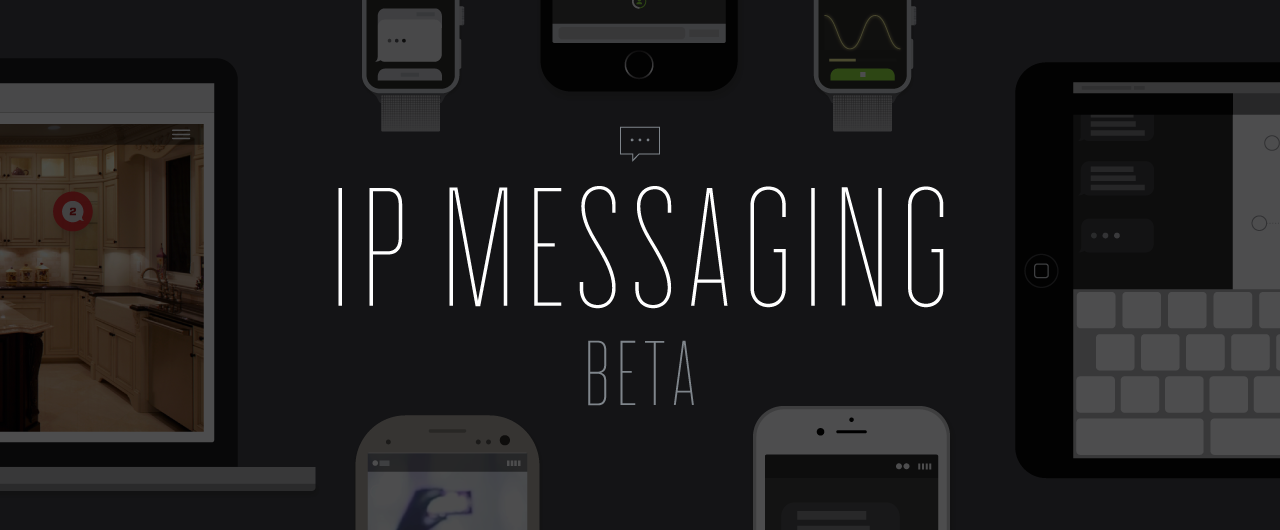IP Messaging Public Beta Now Available
Time to read: 3 minutes

Today, we are happy to announce that Twilio IP Messaging is now available for everyone as a public beta. With Twilio SDKs, you can embed rich chat experiences right into your mobile and web apps. All the advanced features that users expect are already there, so you aren’t stuck writing custom code to handle things like typing indicators and data synchronization across devices.
Best of all, IP Messaging is powered by the Twilio Cloud to deliver unparalleled scale and resilience. This means the same cloud ops team trusted by Uber, Home Depot, and Nordstrom will be ensuring your messages get delivered.
Why a Chat API?
These days real-time chat is becoming a core feature of almost every app. From online marketplaces to dating apps, users want to chat with each other without having to leave one app and switch to a dedicated messaging app. Not only is constant app switching a poor user experience, but app-makers lose the ability to provide valuable context for conversation.
Additionally, businesses rely on chat for a wide variety of internal and external communication such as worker collaboration and customer service. Integrating chat together with business information systems can reap amazing benefits. It is such a nice feeling to follow up about a previous request and get, “Hi again! Yes, I can help you with that” instead of “Can you please waste the next ½ of your life re-explaining your problem to me?” Businesses have all the necessary information tucked away in CRM, ERP and marketing systems, but getting inbound chats to talk to all of that data isn’t straightforward. Off-the-shelf solutions just aren’t flexible enough. On the other hand, building, scaling, and operating a custom chat service comes with tons of complexity.
Until now, in-app chat has required building from scratch. That means creating real-time infrastructure to deliver messages, standing up database storage for chat history, and writing advanced logic to keep track of state and synchronize it between users across different platforms. That’s just to start. Nailing down details like message read status and typing indicator are tricky to get right.
Twilio IP Messaging takes the complexity out of chat with developer-friendly SDKs and APIs. You get all the flexibility of a custom-built solution with a fraction of dev resources you’d need to build from scratch. You can provide context for your users on reliable infrastructure with less effort.
Going Public with IP Messaging
The IP Messaging public beta comes on the heels of rigorous internal quality testing and a successful private beta with a limited number of global customers. Today, we’re opening up the doors and making IP Messaging available to everyone. It’s already enabled on your Twilio account. Simply log in to get started. You can have your first chat app up and running in about 5 minutes.
We are eager to hear from you. Running a public beta gives us the chance to gather more extensive feedback before stamping IP Messaging as “Generally Available.” You can connect with our engineering team on our IP Messaging public beta forum. Here you can provide input and get technical support during the beta period. Additionally, you can find resources like pricing in the portal and a full list of supported features in the docs.
Finally, be sure to check back here on the Twilio blog today, and over the next week. We’ve got a ton of technical content lined up for every type of developer. Be on the lookout for how-tos for building everything from chat apps in swift to location-based chat in python. Here are some projects to dig in to right away:
- Building your own Twitch Plays Pokemon with JavaScript, Twilio IP Messaging and Socket.io
- Designing Chat Applications for iOS Using Swift
- City Chat with Python, Django and Twilio IP Messaging
- Getting Started with Electron: Building a Desktop Chat App
We think you’re going to be as excited about Twilio IP Messaging as we are, and we can’t wait to see what you build.
Related Posts
Related Resources
Twilio Docs
From APIs to SDKs to sample apps
API reference documentation, SDKs, helper libraries, quickstarts, and tutorials for your language and platform.
Resource Center
The latest ebooks, industry reports, and webinars
Learn from customer engagement experts to improve your own communication.
Ahoy
Twilio's developer community hub
Best practices, code samples, and inspiration to build communications and digital engagement experiences.


